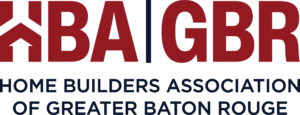The COVID-19 pandemic has forced residents to look at a number of their everyday experiences — including the way they live. In residences such as single-family homes or townhomes, residents may be looking to incorporate spaces such as home offices and exercise rooms to be able to remain productive while safely in place. In multifamily developments, however, there are additional components to consider when attempting to follow important health guidelines.
The areas of real change will occur based on two components: health and safety protocols, and consumer demands. Building codes may dictate some changes for the former, while the latter may affect more of the design and functionality of living spaces. In many cases, health and wellness trends will accelerate what was already occurring in the market — whether it’s a rise or a decline.
For example, traditional clubhouses had already been going through changes in multifamily developments, and because of the need for social distancing — especially in large open spaces — that trend will likely continue as those spaces are reworked to something more functional and more intimate, observed Chris Lessard, president and CEO of Lessard Design International.
“Clubhouses were purely social,” he noted. “That has already changed to be smaller, more intimate workspaces.”
Instead, the thoughtful design of shared building areas might become more important, taking their cues from the hospitality industry and allowing for adaption based on a variety of occupant densities.
Flexibility
Flexibility and purpose will not just affect amenity spaces, but individual units as well, especially as more people potentially shift to a work-from-home environment.
“The sanctuary of someone’s home now has the added burden of operating as backup for makeshift employment,” noted Ben Kasdan, principal at architecture firm KTGY. “This means being flexible enough to use different spaces in different ways than we intended or purposefully planning for flexibility to do whatever they need to do, whether it’s working out, working, whatever.”
That means workspaces within units will likely expand from small cubbies to a more expansive space, Lessard observed, including more ample storage for work items. This may be a challenge, as multifamily units have begun to trend smaller, with creative adaptations such as a kitchen islands being dedicated as desktops.
“The act of working really requires a 5-foot desk space, not a cubby,” he stated.
Flexibility will also play a role in the design of developments overall. Mixed-use projects, for example, may become more frequent, given how essential grocery stores and neighborhood restaurants have been during this pandemic. Accessibility may become more prominent as well.
“Walkability, bike-ability — these are things we’ve been trying to design into our projects for years,” Kasdan stated. “Being able to walk to a couple things of interest has really improved our lives. The pandemic has accentuated that.”
Air Quality
Spending extensive amounts of time at home has also piqued interest in indoor air quality, including better filtration and/or ventilation, and non-volatile organic compound (VOC) paints and sealants, noted Kasdan. Natural ventilation and access to natural light are also going to be in further demand both from a wellness standpoint and work-from-home standpoint.
“Fresh air and air circulation should help prevent viruses,” Lessard concurred, which has generally been decreasing in multifamily buildings, especially high rises, as the envelopes have become tighter through codes. Fresh air ducting systems can improve this — and may become an increasingly important benefit for prospective residents as well.
Balconies may also become more popular in multifamily buildings to provide outdoor access when it might otherwise not be available, added Mark Oberholzer, associate principal at KTGY.
“In a fair amount of urban buildings, there’s definitely a trend not to have them because people don’t use them in a busy city, if you don’t have view or compelling reason,” he observed. “Now all of a sudden, if you can’t leave, outdoor space becomes more important.”
Air quality is not something residents can necessarily control, though. So builders may be increasingly looking toward green building certifications, such as Well Building, LEED and the National Green Building Standard, to help distinguish their projects on the market.
“Green buildings have been marketed using lower utility bills as a draw,” Lessard added. “Now, residents will care about knowing about the air quality, and will pay for better systems.”
Marketing
Virtual tours will become more important as residents seek out new residences online. Prospective residents are already connecting with properties virtually, often with follow-up calls and emails, but the process may become so streamlined that residents never actually meet a staff member.
“In the future, you may be able to get virtual tour, then use your phone to get into apartment you just rented,” Lessard suggested. “You may never see anybody.”
“This will allow for smaller boutique projects because the efficiency of a central leasing staff may not be required,” he added.
For more information related to the COVID-19 pandemic, visit nahb.org/coronavirus.

















